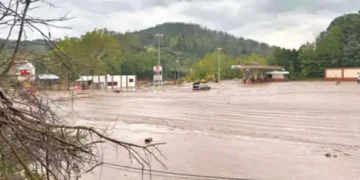FLORIDA: The magnitude of devastation wrought by Helene intensifies by the hour as search crews discover more bodies and floodwaters slowly recede – revealing more neighbourhoods obliterated by the storm. The death toll across six states soared to 128 on September 30, days after Helene made landfall in Florida as a monstrous Category 4 hurricane. Almost 2 million customers still don’t have power. And countless families have no idea whether their loved ones survived, as Helene’s rampage shredded communication infrastructure, according to CNN. Most of North Carolina’s 56 deaths happened far inland. In Buncombe County, at least 40 people were killed, County Manager Avril Pinder said. The county includes Asheville, the scenic mountain city now engulfed by murky brown floodwater.
“We are seeing just piles of people’s houses that were destroyed. Buildings that were destroyed. Cars overturned,” Asheville Mayor Esther Manheimer said.
“The power lines look like spaghetti. It’s hard to describe the chaos that it looks like. It really feels like a post-apocalyptic scene.” Many shellshocked survivors can’t even begin the arduous task of rebuilding because they don’t have basic necessities such as clean drinking water, food, cell phone service and electricity.
Three tractor-trailers full of water arrived in Buncombe County. But it is only enough to supply each resident with one day’s worth of water. Compounding the tragedy, some roads and bridges that are desperately needed to carry aid or reach trapped victims are now impassable or no longer exist.
Hundreds of people are reported missing, though it’s not clear how many succumbed to the storm and how many survived but lack communications access. Helene also killed at least 30 victims in South Carolina, 25 in Georgia, 11 in Florida, four in Tennessee and two in Virginia. Officials implored residents to avoid travelling to hard-hit areas so emergency responders can reach those in need.
The Governor and the head of the Federal Emergency Management Agency visited decimated parts of western North Carolina. Thousands of US National Guard members have been activated to help with recovery efforts across the East Coast, the Pentagon said.
































